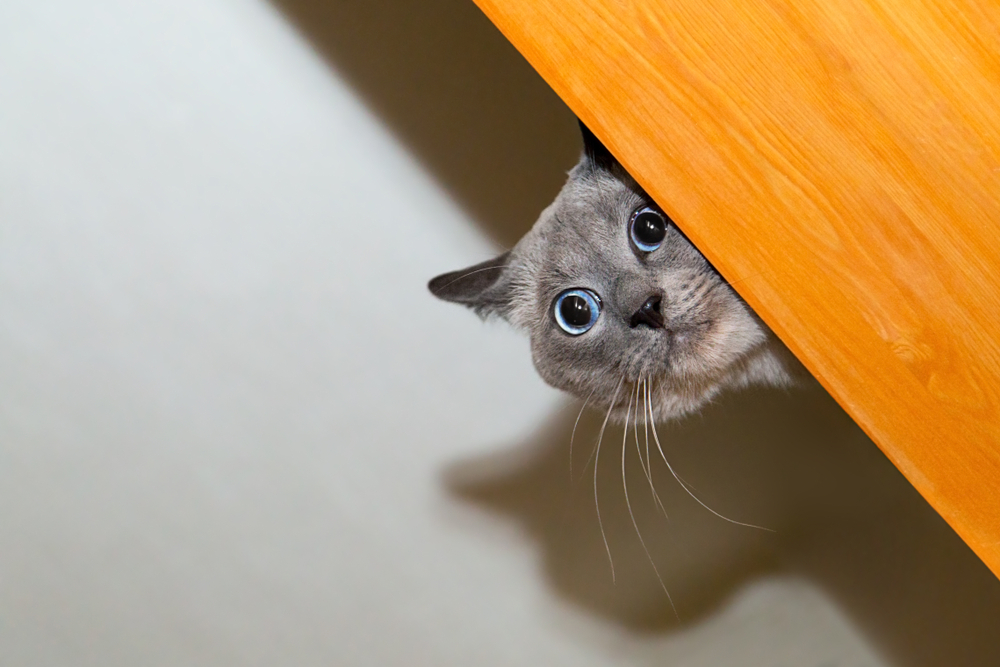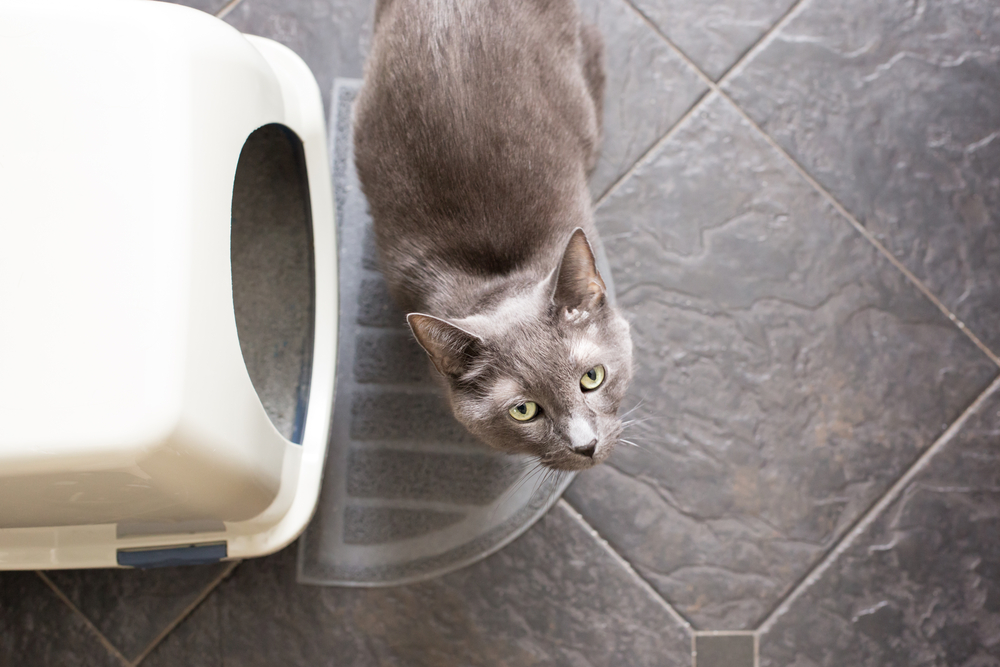Your cat may seem to live a luxurious life filled with sunbeams, scratching posts, and easy meals, but you might be surprised to learn how easily minute household changes can stress your cat. Most cats can tolerate a one-time stressor, but many stressors stacked over time can lead to behavioral or physical manifestations.
Stress is detrimental to your cat’s quality of life, and can damage your relationship with your pet. The Providence Vet team provides cat owners with everything they need to know about identifying and remedying their cat’s stress.
What causes stress in cats?
Unfortunately, almost anything can lead to stress in cats. Some cats are more easily stressed than others because of their individual genetics or socialization history, but the following are likely to stress most cats:
- Visitors in your home
- Construction in your home
- Moving furniture, food bowls, or litter boxes
- Dirty or inadequate litter boxes
- Bullying from other pets
- New pets in the home
- Unpredictable human actions
- Unpredictable daily routine
- Inadequate natural behavior outlets
- Boredom
Situational cat stress
Situational stress, which is the easiest to recognize, is usually short-term. Common situational stressors include veterinary visits, grooming visits, or a short-term visitor. An acutely stressed cat’s first instinct may be to run and hide, but that isn’t always possible, and a cat who cannot get away from the stressor may show the following signs:
- Ears flattened to the side or pinned back
- Dilated pupils
- Swishing tail
- Vocalization
- Hunched, “loaf” body posture with legs tucked under
- Avoiding eye contact
- Hissing, spitting, swatting, or biting
Chronic cat stress
Chronic cat stress usually arises from home situations, and multiple stressors at one time can occur and negatively affect the cat. This stress type is more difficult to recognize than acute situational issues, because early signs are usually subtle or undetectable. But, as stressors stack up, your cat may develop behavior changes, including:
- Urinating outside the litter box
- Increased or decreased activity level
- Increased or decreased appetite
- Aggression toward people or other pets
- Social withdrawal
- Overgrooming
- Digestive upset
Cat stress consequences
Long-term cat stress that isn’t recognized or addressed will lead not only to the behavior changes mentioned above, but also to a damaged human-pet bond, stress among other household members, and potential physical illness. In the worst case scenario, the cat’s behavior can result in their family relinquishing them to a shelter.
Similar to stress in humans causing high blood pressure, weight gain, or headaches, stress in cats can lead to tangible physical illness. The most common problems are decreased immune function, herpesvirus eye and upper respiratory infections, and urinary tract inflammation or infection. Chronically stressed male cats can develop a urinary obstruction, a life-threatening emergency.
Cat stress solutions
Chronic stress or anxiety that has led to behavior problems, such as aggression or chronic inappropriate urination, may need care from a veterinarian, veterinary behaviorist, or qualified trainer. These professionals can help to address specific stressors in your home environment, observe your pet-household member relationships, and prescribe medications to reduce stress and anxiety. Prescription medication can also help cats dealing with unavoidable short-term stressors, such as car travel or veterinary visits.
As a cat owner, you can take steps to modify your home, provide a more cat-friendly environment, and reduce long-term stress. Take a few moments to think about your home set-up, and which of these steps could benefit your cat:
- Provide more litter boxes — Provide one box per household level, and at least one box per cat, plus one more.
- Keep litter boxes clean — Scoop boxes daily and clean them completely every few weeks with mild soap and water.
- Mindfully place food, water, and litter boxes — Place litter boxes in easily accessible locations, away from loud noises. Avoid corners, and place food and water away from litter boxes.
- Provide multiple scratching surfaces — Scratching is a fundamental behavior that cats use to transmit pheromone messages, and placing multiple, varied scratching surfaces in main home areas will satisfy this need and save your furniture.
- Reduce offensive odors — Avoid strong cleaning chemicals and air fresheners, which cats may find offensive. Also, consider that cats intentionally rub and scratch items to impart their smell, so consider washing these things less often.
- Provide play and enrichment opportunities — Interactive toys, laser pointers, food puzzles, and wand toys keep cats mentally stimulated and provide opportunities for practicing natural hunting behaviors. Vertical space allows cats to climb and survey, and window perches provide great bird-watching fun.
- Provide a quiet, safe space — Most cats prefer that their sleeping and resting space be near main areas so they can be part of the family, but they also need a safe, quiet place off the beaten path where they can retreat, as needed. Find where your cat likes to hide, and furnish the area with comfy, familiar-smelling bedding.
- Address problematic interactions — If you notice your cats seem tense around one another, or your dog is preventing your cat from accessing resources, consult a professional trainer or behaviorist about repairing the relationship.
Because stress, pain, or illness can cause behavior changes, the Providence Vet team’s physical examination is the first step to finding your pet’s underlying issue. Call us to schedule a visit if your cat shows stress or illness signs, or to discuss additional stress reduction strategies.







Leave A Comment